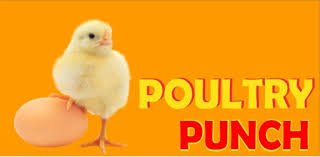TIPS TO IMPROVE BROILER FEED EFFICIENCY

Dr Kiran Kumar,
Korla, Regional sales manager,
Vetphage Pharmaceuticals Pvt. Ltd.
Improved broiler feed efficiency is linked to improved profitability. The way to improve the productivity index is by balancing the ratio between energy needed and amino acids, and by improving the feed digestibility by different means. However, there are ways to improve the efficiency even after it is delivered to the farm. Let us take a look at some ways in which you can make the most out of your broiler feed:
• Avoid silo hot spots – Mold consume valuable nutrients and also produce mycotoxins. If the broiler feed is moldy, it is unpalatable at best and toxic at worst. In a lot of cases, feed is dumped into dirty silos. In warm and humid climates, mold grows easily, and it is not uncommon to find patches of moldy feed stuck to the silo surface. Adding a mold inhibitor and mycotoxin binder to the feed is not enough. You must inspect and clean the silos periodically. The dosage rates that are usually recommended for mycotoxins do not take this into account, and it is an issue that can be quite serious if left unchecked.
• Use feeders properly –Feeder management is essential to minimizing feed wastage. In the case of both straight and round feeders, feed wastage can be prevented by using the feeder with a lip and ensuring that the feeder is not more than half filled. Make sure you hang the feeder at the level of the birds’ backs, and it is at least 7 cms deep. Clean them regularly and make sure that the bird capacity is just right. This will ensure that feed consumption is neither a fight to eat nor a chance to beat boredom. One way to maximize feed efficiency is to make sure that the drinkers are placed close to the feeders so that there is no spoilage.
• Use the right lighting – Keeping the lights on is not good for feed digestibility. If the lighting is constant, the birds over consume feed, which in turn increases the feed passage rate. Since birds are usually fed at their maximum genetic potential, the extra feed they end up consuming does not interact with the digestive enzymes and this reduces the feed digestibility. In contrast, an alternate lighting system, where the birds are exposed to one hour of light followed by three hours of darkness gave them a chance to digest the feed during the resting period, also improving the feed efficiency by curtailing their movement. The only catch in this system is you need enough feeding spaces for all the birds to eat at the same time, which requires careful pre-placement of feeders.
• Make sure the body weight is market friendly – If you want your birds to attain a certain market weight or market age, you should follow your contracting partners’ guidelines. If you are going to sell your birds on the open market, then you need to keep in mind that the efficiency of the feed gets worse as they age. This is on account of the fact that they have to maintain a greater body mass every day, and this requires both amino acids and energy. So finding the minimum acceptable weight will also minimize the feed efficiency. Although the market rates keep fluctuating, it falls anywhere between 1100 and 1200 grams. It goes without saying that this does not ensure maximum profitability and other parameters, such as cost per kg of weight gained, and weight gain per floor surface, should also be consulted.
• Keep your birds healthy – Although this is also obvious, it is worth mentioning. Sick birds are usually kept in isolation, but what most poultry farmers forget to pay attention to is cases of subclinical diseases. They usually go unnoticed and steal the performance by causing malabsorption and diverting energy to the immune response instead of growth. On top of that, they might even break down the muscle proteins, which reduces the body weight and brings down the feed efficiency.Subclinical coccidiosis is one of the most common causes of performance loss in broilers. Poultry producers must monitor the coccidiosis status of their flocks throughout the growth cycle and collect sequential fecal samples, which should be tested for oocyst counts per gram of faeces. Successful programmes to maximize broiler productivity must include a coccidiosis control strategy that should be formulated after discussion with a poultry veterinarian.
Not all of the aforementioned pointers are applicable to every poultry farm, but by taking at least one into consideration, breeders can improve their feed efficiency and this translates to increased profitability, which is something breeders across the country need to recover from the sales loss due to the pandemic.




